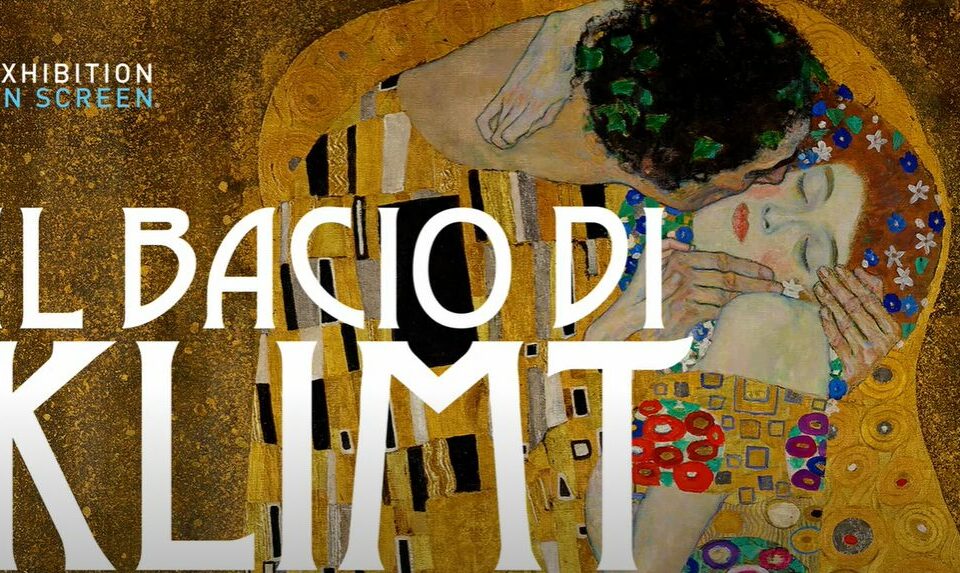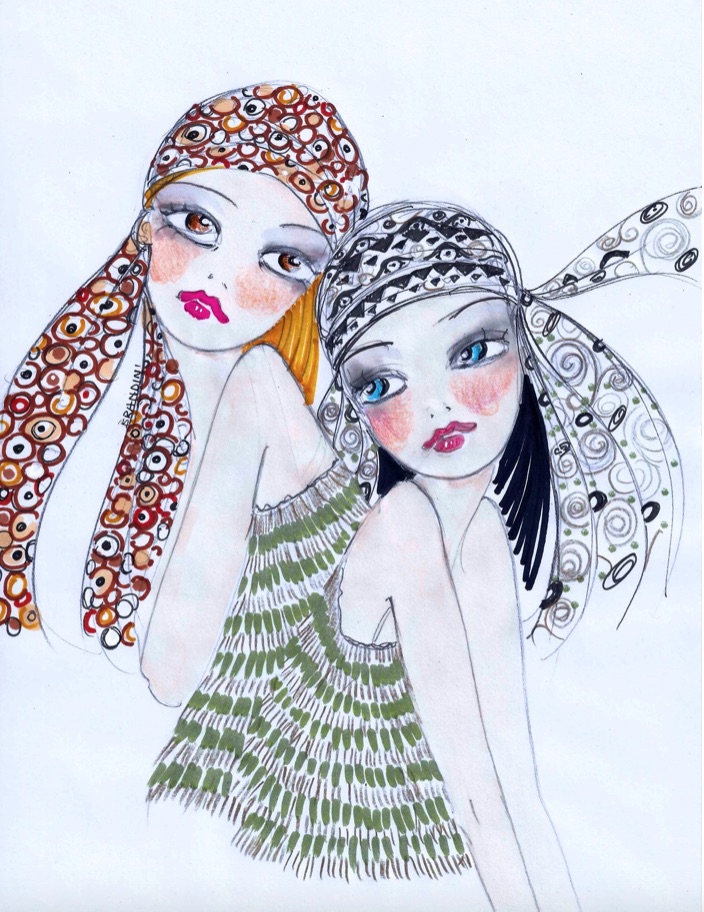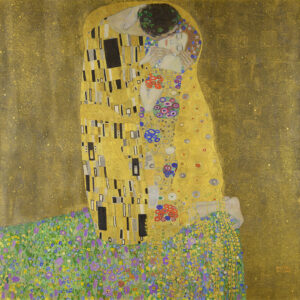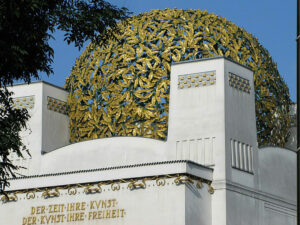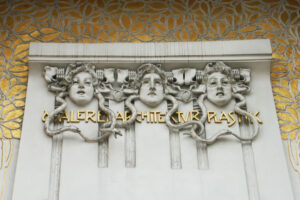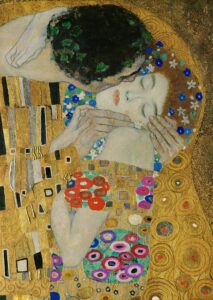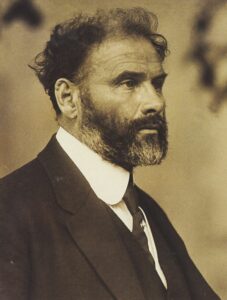Detail of the poster of the film Klimt and The Kiss
“The suitors” by Beatrice Brandini
The most iconographic painting on love has become a docufilm: Klimt and The Kiss.
Gustav Klimt, one of the most revolutionary and provocative artists of the Secession, painted what we can consider his masterpiece around 1908: The Kiss.
“The Kiss” by Gustav Klimt
Born on the outskirts of Vienna in 1862, during a trip to Ravenna, Gustav Klimt was struck by Byzantine mosaics, so much so that a few years later, they became the backdrop and distinctive stamp of his majestic works.
Belvedere Museum in Vienna
The unique style of this extraordinary artist, who fused ancient mythology with the most extreme modernity, reached its highest levels with what is called the “golden period”, in which with a unique technique, he applied a very thin gold leaf to the canvas. natural gold. Among the most extraordinary works of this period we remember the iconic Kiss preserved at the Belvedere in Vienna.
Two details (dome and friezes) of the wonderful Secession Building in Vienna
Viennese secessionism, founded in 1887, unites and connects with the style of the Belle Epoque, with Art Nouveau and with the thought of Sigmund Freud, inventor of psychoanalysis, without whom he would be more difficult to place and understand Klimt’s work.
“The Kiss” (Der Kuss) was created between 1907 and 1908, a year after Picasso’s Demoiselles D’Avignon, a fundamental period for the history of art, in which new avant-gardes experimented, breaking the mold and contributing to great novelty.
Detail from Gustav Klimt’s painting “The Kiss”
The film’s director Ali Ray explains the magic and fame of this painting thus: “This golden, glittering image of an embracing couple remains one of the most popular ever. It is mentioned in films, it is shown on t-shirts, calendars, travel bags. However, when a work like The Kiss becomes so familiar, we stop “seeing” it. The Kiss could only be painted when it was painted, exactly in that place and exactly by that artist. Vienna at the beginning of the century was a glorious and fascinating city, but with an intriguing dark side: over the course of the film we will discover that this golden painting echoes all these contradictions.”
Gustav Klimt
Klimt, although influenced by the more classic impressionists or Anglo-Saxon portraitists, managed, not only with this painting, to revolutionize the world of painting and, above all, the way in which to look at it. In this painting the male figure tightens his hands around the woman’s neck, it is passion but also calm submission. What is the message of the work? The decadence of a century that is ending, leaving room for the unknown of the new? The anguish of the imminent war? The end of a love story? What lies beneath the golden, glittering background?
But, however you want to interpret it, “The Kiss” is perhaps the highest representation of love.
Good life to everyone!
Beatrice


